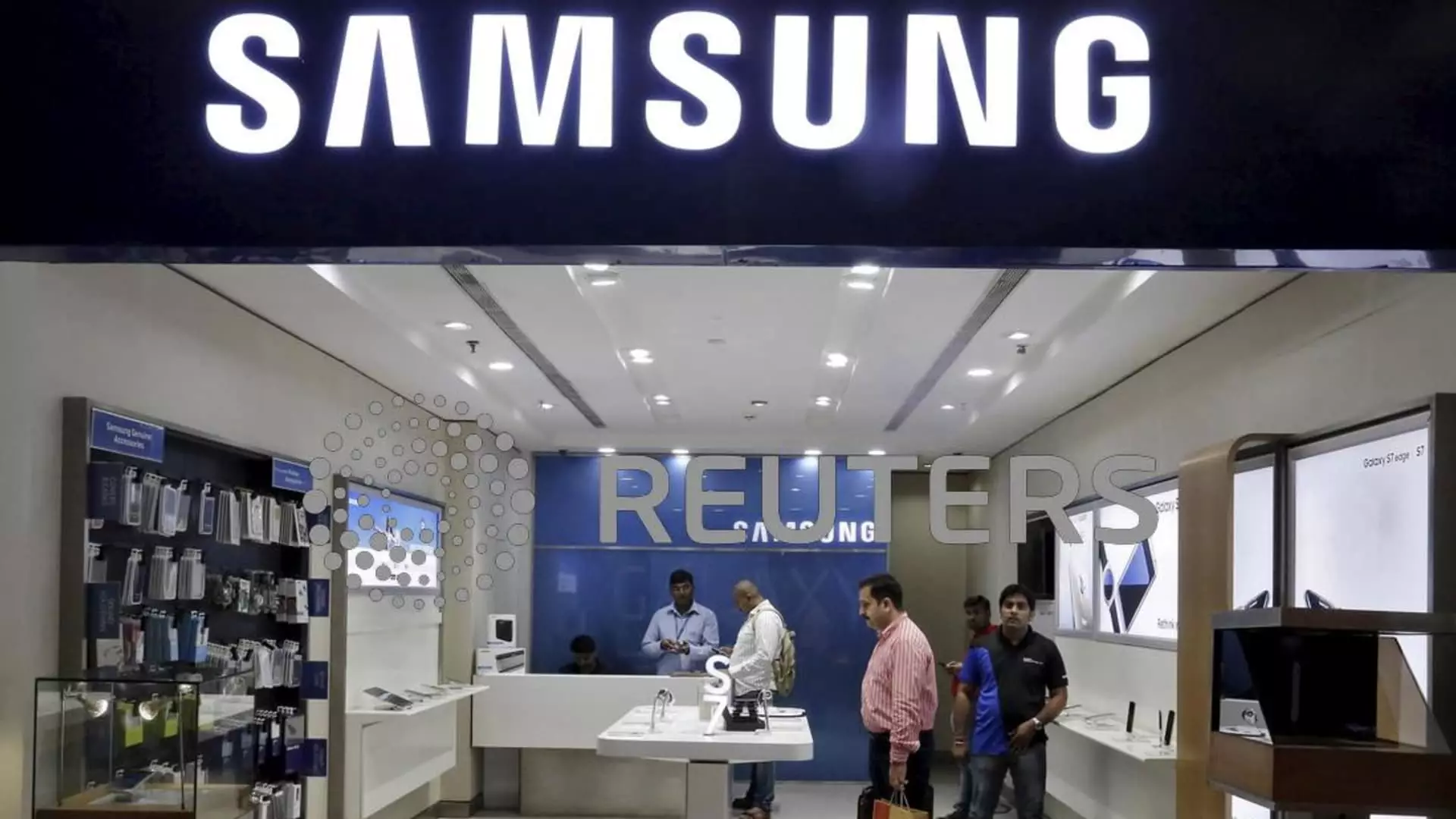Samsung Electronics recently released its third-quarter earnings report, which showcased sales and operating profits slightly exceeding its prior expectations. Nevertheless, the figures painted a complex picture, particularly for its semiconductor division, which is experiencing a significant downturn. The company’s semiconductor unit reported an operating profit of 3.86 trillion won (approximately $2.8 billion), reflecting a stark 40% decline compared to the preceding quarter. This downturn serves as a pragmatic reminder of the volatile nature of the tech industry, where even market leaders can face stark fluctuations due to external pressures.
While Samsung’s memory chip sector has enjoyed a resurgence in demand spurred by advancements in artificial intelligence (AI) and traditional server products, it simultaneously grapples with headwinds affecting mobile device sales. The company attributed these challenges to “inventory adjustments” in the mobile market, elucidating how fluctuations in demand can ripple across different sectors. Additionally, the competitive environment in China, characterized by an oversupply of legacy products, poses further challenges for Samsung. This situation underscores the duality of technological progress—while emerging technologies in AI can create new avenues for growth, established segments often face disruption from market dynamics.
Samsung’s dominance in the memory chip sector, especially regarding the production of components for laptops and servers, is undeniable. It also stands as the second-largest smartphone manufacturer on a global scale. However, the current landscape suggests a delay in the recovery of mobile and PC demand, revealing a broader trend that could significantly impact future revenues. Although there are bright spots with increasing interest in advanced chipsets—primarily due to AI investments—the overall landscape remains uncertain. Clarity in future demand patterns may emerge as companies increasingly pivot toward cutting-edge technology.
In a striking admission of the company’s ongoing challenges, Samsung Vice Chairman Jun Young-hyun publicly apologized following the release of guidance that fell well short of analysts’ expectations. The reported revenue of 79.1 trillion won and operating profit of 9.18 trillion won, though slightly better than the company’s initial forecasts, starkly contrasted with LSEG’s estimate of 11.456 trillion won in operating profit. Such discrepancies can shake investor confidence, and it reflects the enormous pressure Samsung faces in aligning its operational performance with market predictions.
Despite the present challenges, Samsung remains optimistic about the future. The company anticipates that the robust demand for advanced chipsets will spur growth moving forward, particularly as tech enterprises continue substantial investments in server capabilities. Nevertheless, the decline in shares—24.71% so far this year—demonstrates that investor sentiment remains cautious. As Samsung navigates its recovery strategy, stakeholders will be keenly watching how it adapts to the changing dynamics of demand and supply in the semiconductor landscape, balancing innovation with market realities.
Samsung Electronics is at a critical juncture, one that demands both a recalibration of expectations and a strategic pivot to ensure sustained growth in an increasingly competitive and technologically advanced market.

